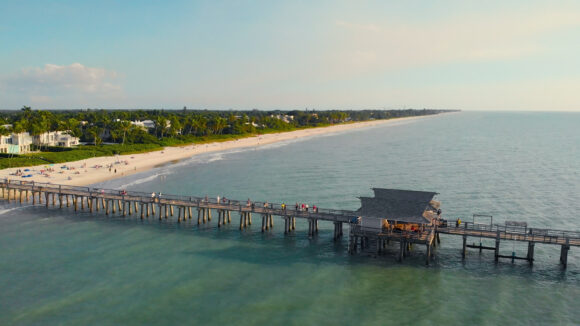Navigating the Hard Market: 4 Strategies for Brokers to Contend with Constraints in Gulf Coast States Property Insurance

This post is part of a series sponsored by IAT Insurance Group.
U.S. coastal areas, particularly Gulf Coast states like Florida, Louisiana and Texas, have been hit hard in the past decade by climate change-related natural disasters. In 2022 alone, damages from 18 separate weather events totaled $165.1 billion.[1]
The region’s exposure to natural disasters leads to higher catastrophic loss potential, more exclusions on your Property and Casualty insurance policy, limited capacity and overall, less appetite from insurance carriers.
Brokers are well aware of the challenges created by a hard market, but the tumultuous nature of the Gulf Coast states region specifically means brokers should continually be aware that unique opportunities do exist. With a little creativity, brokers can work with their carrier partners to pull together a personalized program for a business in need.
4 strategies to consider as a broker:
They say the only constant is change, which is undoubtedly true for the insurance market in the Gulf Coast area. Brokers who embrace that change will more easily find themselves in a position to uncover those unique opportunities. What follows are four strategies to consider in light of current market conditions.
Think outside the box. In a soft market, finding a carrier to place an entire account isn’t a major challenge. Now, however, you may need to find three or more different carriers to place a tower of coverage. Find new markets that may specialize in one part of the risk, I.E. Liability, Liquor, Excess, Wind, X-Wind, etc..
Being open to offering solutions, as well, such as finding carriers that offer deductible buybacks, which allows the insured to pay a higher premium so the deductible is smaller or nonexistent when a claim is made, can be a good solution. Another might be to consider self-insurance.
The cost of traditional insurance will most likely be higher because of the hard market but finding alternative solutions for insureds may provide a unique solution for their needs.
Serve as the insured’s trusted consultant. The more you can help educate your customer, the more they’re going to look to you as a trusted consultant to their business. As the expert, you can provide insight on what is going on in the market, specifically the two major forces at play:
There used to be many more carriers than there are now, which means capacity is down. The carriers writing in these areas will focus on the best risks and may include additional exclusions on the policy. Today percentage deductibles are more common so be aware of the actual deductible amount should a claim occur.
Inflation means costs have increased across the economy, so now the contractor who comes to fix the property costs more, etc.. Inform the insured of the importance of being properly valued in the event of a loss in today’s environment. If they are not keeping up with inflation by selecting proper limits, they are more likely to go out of business in the event of a loss due to financial hardship.
By approaching your relationship with your customer as a consultant — sharing the realities of the market as well as multiple potential solutions for them to consider — helps build trust.
Going beyond the application. The more you know about your customer, the better chance you have to add value and reduce risk. This often involves looking beyond their answers to traditional questions on an application. Consider what they might have left off. There may be true risks and exposures that aren’t immediately apparent.
Once you’ve identified what those may be, you must determine what to do about them. What can they live without coverage for? What are appropriate limits? This is again where a broker can shine. As experts, and by thinking creatively, you can figure out where to take a customer’s risk. In a hard market, there is 10 times more opportunity than in a soft market. This environment can be most beneficial to brokers who can be creative with policy limits, work in a niche market and use their connections in a positive way.
Build on your existing carrier relationships. Insurance has been, and always will be, a relationship business. As overall insurance capacity gets restricted, carriers will be more likely to work with brokers they have a good track record with. As a result, the relationships you’ve been building for years are now more important than ever. In an environment with fewer carriers, continue to invest in the solid relationships you’ve worked so hard to build.
What comes next?
The future is always uncertain, but the effort an insurance broker puts in now will serve them well for whatever happens next. The market may eventually soften in the Gulf Coast states region, but until then, the above strategies will carry you through the hard times and put you in a great position to thrive in the future.
ASK A LOSS CONTROL REPRESENTATIVE
Have a question on how to mitigate risk? Email losscontroldirect@iatinsurance.com for a chance to see your question answered in a future blog.
By Ben McDonald, AVP Underwriting, Binding Authority
[1] NOAA Climate.gov “2022 U.S. billion-dollar weather and climate disasters in historical context,” January 10, 2023.
Topics
Agencies
Pricing Trends
Property
Market
Interested in Agencies?
Get automatic alerts for this topic.





